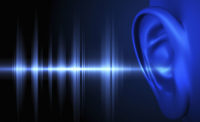Surprising number of health care workers have hearing loss

Up to 31 percent of the workers in the Health Care and Social Assistance (HAS) sector have experienced hearing loss, according to a new study from the National Institute for Occupational Safety and Health (NIOSH). The overall prevalence of hearing loss among noise-exposed exposed workers was found to be 19%, while some subsectors within the HSA had up to 31% prevalence of hearing loss. The study was published recently in the Journal of Occupational and Environmental Medicine.
Hearing loss is the third most common chronic physical condition in the United States. Although a smaller percentage of workers in the Health Care and Social Assistance sector are exposed to hazardous noise – unlike industries like mining or construction –NIOSH researchers found that some subsectors in the HSA had higher than expected prevalences of hearing loss for an industry that has had assumed “low-exposure” to noise.
“This is the first known study to estimate and compare the prevalence of noise-exposed worker hearing loss by subsector within the HSA sector and we used audiograms from hundreds of U.S. companies within this sector,” said Elizabeth Masterson, PhD, epidemiologist and lead author of the study. “High-risk industries for hearing loss exist within the Health Care and Social Assistance sector. Occupational hearing loss is entirely preventable.”
Most of the HSA subsector prevalence estimates ranged from 14% to 18%, but the Medical and Diagnostic Laboratories subsector had 31% prevalence and the Offices of All Other Miscellaneous Health Practitioners had a 24% prevalence. The Child Day Care Services subsector also had a 52% higher risk than the reference industry.
Further work is needed to identify the sources of noise exposure and protect worker hearing in the Health Care and Social Assistance Sector. Successful noise reduction measures have been documented in hospital settings, exposure to chemotherapy drugs can be better prevented and laboratories can be modified to reduce the level of noise. For general occupational hearing loss prevention, NIOSH recommends removing or reducing noise at the source, and when noise cannot be reduced to safe levels, implementing an effective hearing conservation program.
Visit the NIOSH website for more information about noise and hearing loss prevention research at NIOSH. For industry sector-specific statistics on hearing loss, tinnitus, noise exposure, and other information, please visit the Occupational Hearing Loss Surveillance webpage.
NIOSH is the federal institute that conducts research and makes recommendations for preventing work-related injuries and illnesses. More information about NIOSH can be found at www.cdc.gov/niosh.
Looking for a reprint of this article?
From high-res PDFs to custom plaques, order your copy today!







